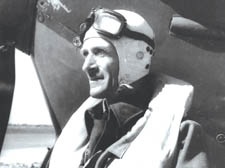| |

Sir Keith Park |
4th plinth: battle of Britain’s artists
Calls for RAF war hero to be honoured as ideas are put forward for Trafalgar Square display
THE debate over what should occupy the fourth plinth in Trafalgar Square heated up this week after leading West End art figures condemned plans to install a permanent memorial to a Battle of Britain hero.
Mark Jones, director of the the V&A, Somerset House director Gwyn Miles and Jay Jopling of the White Cube, said the the plinth should remain a rotating display for new works of modern art.
Their views follow a protest by Second World War fighter pilots in Trafalgar Square last week.
The war veterans, calling for a permanent statue of Sir Keith Park, credited with masterminding the RAF defence of the skies against the Luftwaffe when London came under siege in 1940, are backed by politicians Tony Benn, Boris Johnson and astronomer Patrick Moore.
A statement released by the group of artists read: “We believe that the rotating programme of contemporary art on the fourth plinth in Trafalgar Square is the best public use for the plinth and should continue.
“The series of commissions on the plinth presents 21st-century London as a forward-looking, dynamic and progressive city with a rich heritage.”
The Battle of Britain campaign is being led by philanthropist Terry Smith, who has pledged more than £100,000 to commission a bronze sculpture of Sir Keith.
Mr Smith, chief executive of trading house Tullett Predom, said: “It is unbelievable that there is no recognition of a man who made such a massive contribution to Britain’s defence. The Germans called him ‘the defender of London’. If you look around the Square, there are admirals and generals, but no statues of anyone in the RAF.”
Born in New Zealand, Sir Keith, who died in 1975 aged 83, was largely a forgotten man in a chapter of Britain’s history that has received massive coverage.
In 1947 the chief of the RAF, Lord Tedder, honoured him as the man who “saved the country”.
He said: “I do not believe it is realised how much that one man, with his leadership, his calm judgment and his skill, did to save, not only this country, but the world.”
The fourth plinth, built in 1841, was originally intended to hold a statue of William IV on a horse, but remained empty because of insufficient funds.
Since 1999 the plinth has hosted a rolling programme of modern artworks, most notably Marc Quinn’s sculpture of Alison Lapper – a pregnant woman who was born without arms or legs.
In November, Thomas Schutte’s model for a hotel was chosen for the spot. Six artists including Tracey Emin and Antony Gormley are battling it out to succeed Schutte when the work is rotated in 2009.
Sandy Nairne, chair of the Fourth Plinth Commissioning Group, said: “The commissioning of contemporary art for the plinth was established by the Royal Society of Arts in 1998.”
He added: “There are many other options across London for locating an important memorial to Sir Keith Park and identifying the most appropriate one will have my strong support.” |
 |
|
| |
| |